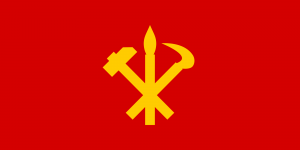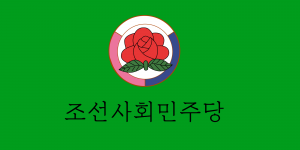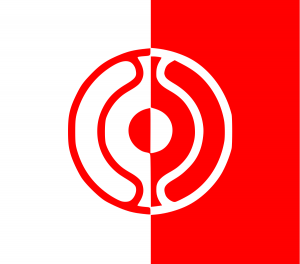There are a great many misconceptions about life in North Korea, tourism to the country, and how it’s actually run there. One such misconception is that North Korea is a one-party state and there is no North Korea political parties scene.
In actual fact, and similar to many socialist countries that came into being at the end of World War II, North Korea employed the tactic of a united front – much like East Germany did, and China still does.
In North Korea there are actually three political parties that hold seats in the Supreme People’s Assembly – all of whom are also members of the Democratic Front for the Reunification of the Fatherland.
The Workers’ Party of Korea

The foremost of the three parties – and the most well-known – is the Workers’ Party of Korea, formerly known as the Communist Party.
One official government publication describes them thus:
President Kim Il Sung founded [the Workers’ Party of Korea] on October 10, Juche 34 (1945). It regards the Juche idea fathered by the President as a guideline and its basic mission is to strive for materializing the cause of Juche. The Workers’ Party of Korea, invincible party [sic] is the staff of the Korean revolution as well as an organizer and guide of all victories of the Korean people.
The Korean Social Democratic Party

The second most important of the political parties of North Korea is the Korean Social Democratic Party, formerly known as the Korean Democratic Party. They have been known to release publications aimed at a foreign audience, and are seen as the second most important political party in the country.
One official government publication describes them thus:
It is a democratic political party of love for the country, nation and people which safeguards the demand of the people from all walks of the country and the national interest and fights for social justice. It was founded on November 3, Juche 34 (1945). Its fundamental task is to fight for the independent and peaceful reunification of the country and to pursue a foreign policy based on independence, peace and friendship.
The Chondoist Chongu Party

The third major political party is the Chondoist Chongu Party, who represents the native Korean religion of Chondoism. This minority religion was formerly quite important across the Korean Peninsula.
According to a government publication:
It is an independent and democratic political party engaged in depending the interests of the Korean nation and Chondoists. It was founded on February 8, Juche 35 (1946). It aims to defend patriotic ideology and independent spirit, oppose foreign aggression and intervention and take part in building a civilized, thriving and democratic state.
Chongryon
Not a political party per-say, but repesent the Korean-Japanese that hold allegience with North Korea. They have 5 seats in the North Korean parliament.
Other Supreme Peoples Assembly Representatives
All representatives to the Supreme Peoples Assembly must be members of the Democratic Front for the Reunification of the Fatherland. Aside from the three political parties of North Korea this also includes a number of civil organizations.
The Following Mass Organizations Are Members of the Fatherland Front:
- Kimilsungist-Kimjongilist Youth League
- Socialist Women’s Union of Korea
- General Federation of Trade Unions of Korea
- Union of Agricultural Workers of Korea
- The Korean Children’s Union
Note – The Chondoist Party is the only North Korean religious organization represented. These are the only permitted organizations for elections in North Korea.
Former North Korean Political Parties
Laboring People’s Party – A left wing party that was an original member of the front and git 20 seats in the 1948 Korean elections. Had a southern counterpart and were known to have sats in North Korea until 1962. Little is known about them after that.
People’s Republic Party (North Korea) – Almost nothing is written about this party other than they also got 20 seats in the 1948 election, 3 seats in 1957 and none in 1962. After that they have not been represented.
Democratic Independent Party – Another party that got 20 seats in 1948 and continued their to be present until 1962 when they won one seat. Also had a southern counterpart.
Korea Buddhist Federation – Received 2 seats in 1957, but have not been present since. Are still the managing body for Buddhists within the country.
Gonmin People’s Alliance – Quite literally nothing is known about this party except they won a single seat in 1957!
External North Korea Political Parties
There are a number of North Korean opposition groups that can be described variously as political parties, pressure groups, or even rebel armies. These are illegal in North Korea and you should not mention them in country.
Free Joseon – Use the former name of the country. Established in 2017 it has largely been associated with the family of Kim Jong-Nam.
North Korea Freedom Coalition – US based organization that some might say is run by the CIA!
North Korean People’s Liberation Front – Formed in 2010 by ex-members of the Korean Peoples army to “overthrow” the regime, but in fact have done very little.
ou may want to form your own opinion on the political parties of North Korea by finding out more yourself – but whether you do or don’t, you’re sure to impress your North Korean guides with your knowledge of the three major parties when you visit the country!





